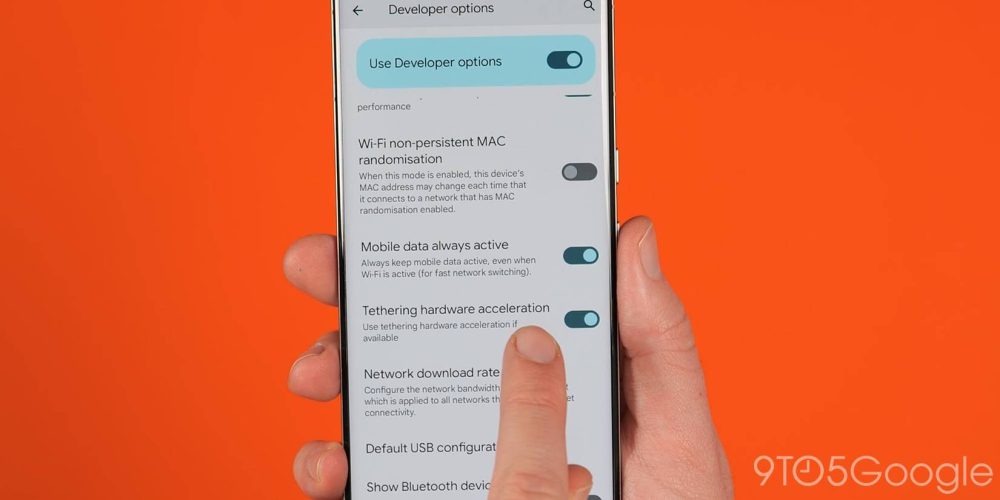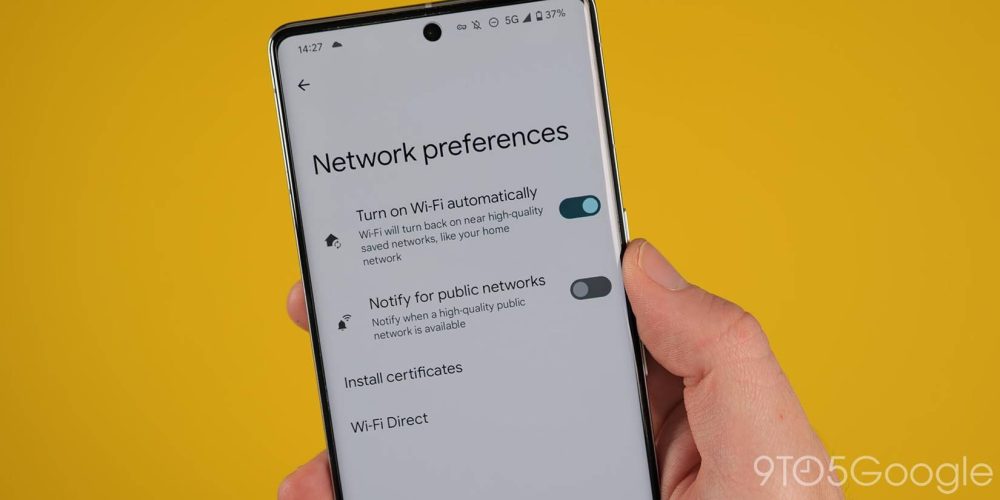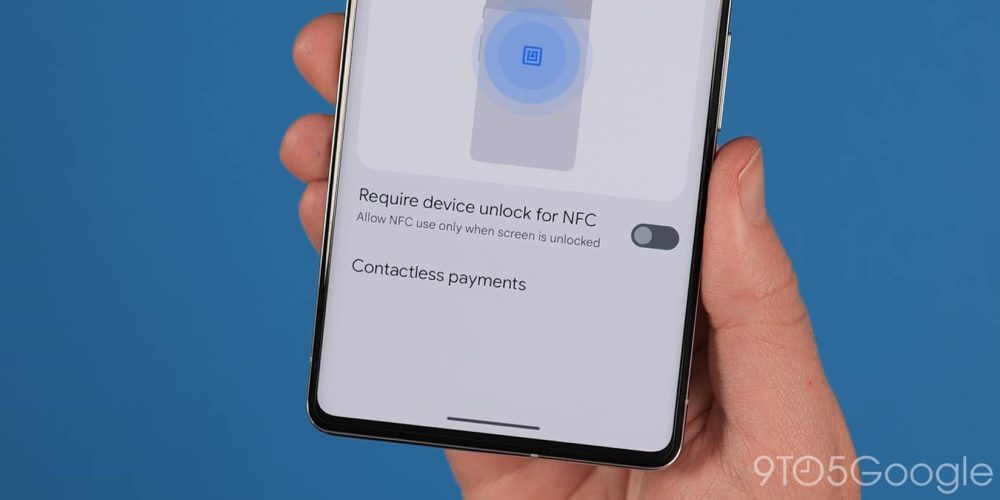
Your smartphone knows a lot about you, and in some cases, too much. Certain features and settings are enabled on Android by default that we think you might want to disable them right now.
A word of warning, simply disabling a few settings on your Android smartphone will not instantly return it to where it was the day that you bought it. That said, it could improve your daily experience and give you a little extra control in areas you didn’t know you had any.
Be sure to enable Developer options before diving into this list as you’ll otherwise be left scratching your head trying to find out each of the settings and features. Just head to Settings > About phone > Build number. Tap it seven times and enter your PIN or pattern, and you’ll have access to a wonderful world of extra phone functionality.
Overview
- Video — 10 settings to immediately disable on your Android phone
- Limit background processes
- Wi-Fi + Bluetooth scanning
- Google Location history
- Restrict background data usage
- Disable Mobile data always being active
- Notify public networks
- Usage and diagnostics
- Opt-out of ads personalisation
- Require device unlock for NFC
- Sensitive notifications
Video — 10 settings to immediately disable on your Android phone
Subscribe to 9to5Google on YouTube for more videos
Limit background processes

If you have an older phone or a modest phone with a low amount of RAM, you can limit or disable the standard background process limit. This might not make an immediate difference to your day-to-day experience on day one, but further down the line, limiting just how many concurrent background apps are held in stasis at any point in time could prove useful.
Head to Settings > Developer options > Background process limit. From here, you can set the process limit between 0 and 4. This means you can play around to find the right setting for you and your device.
Wi-Fi + Bluetooth scanning


Another way to potentially reduce battery usage is to disable Wi-Fi and Bluetooth scanning on your Android phone. In simple terms, these features mean that your phone is able to scan for Wi-Fi networks and Bluetooth devices even when both settings are disabled for better location accuracy or GPS pinpointing.
Both settings are found in the same place in Android on Pixel, so it’s not hard to disable Bluetooth and Wi-Fi scanning at the same time. To do so, head to Settings > Location > Wi-Fi scanning and Settings > Location > Bluetooth scanning, and toggle these options to “off”.
Google Location history

Your Android phone and Google Maps are capable of tracking your movement history, and while some people simply do not care, you might not want to let that happen automatically. This is tied to your account and is used to give better-personalized results in Maps, plus better recommendations based upon the places you go. It’s a trade-off that you need to decide that you’re happy to make.
There are a couple of options here that can be useful. You can disable the feature entirely, or set your Location history to auto-delete after a preset period — anywhere from three to 36 months to be precise. To adjust or disable the Google Location history default settings on your Android device, open Settings > Location > Location Services > Google Location History > Sign-in to your Google Account.
This should open the “Activity controls” page, and you can toggle Location History off completely or scroll down and select “Choose an auto-delete option”, then select the “Auto-delete activity older than” dropdown menu from three, 18 or 36 months.
Add icons to home screen
Most Android phones today will automatically add brand new apps or re-installed apps to your home screen. Now, that’s great if you like having everything across multiple pages. We stil think the app drawer does a better job of keeping things neat for apps you might not need all that often but want to keep on your phone.
Depending upon your device launcher, you can enable or disable this function by long pressing any blank space on your home screen or side pages and tapping “Home settings” or “Settings.” From here check or uncheck the “Add app icons to home screen” toggle to suit your personal preferences.
Restrict background data usage

Sometimes apps on your Android device will access mobile data or your Wi-Fi connection to do things like update your feeds in the background and save time on loading until you re-open. However, with potentially hundreds of apps on your phone able to do this, you can rack up a ton of data usage if you’re on a limited plan.
This can pause or limit notifications on your phone, but you have the ability to adjust this on an app-by-app basis so that means only apps you select will be affected. There are a few ways to enable or disable background data usage for apps installed on your phone. The easiest and most obvious is to head to the app in question by opening Settings > Apps > Select an app you want to adjust data, and then settings > Mobile data and wi-Fi > Background data.
Another way to reach this menu and see up-to-date information on just how much data an is using on Pixel phones – head to Settings > Network and Internet > Internet > Non-operator data usage > Select an app > Background data.
Disable Mobile data always being active

In a similar manner to apps gaining background data access, you might want to limit how mobile data is utilized by your device. On most Android phones, mobile data is technically always available even when you are connected to a fast, stable Wi-Fi network. Sure, this does mean that quickly switching between Wi-Fi and mobile data is seamless but it does mean potential battery life squeezes.
We suggest that you disable this functionality right out of the gate because there’s no real penalty when leaving a Wi-Fi network and reconnecting to data channels. To disable this you’ll need to head to Settings > System > Developer options > Mobile data is always active > Toggle off.
Notify public networks

When you’re out and about you might get notifications on your phone to alert you that an open or public Wi-Fi network is available. In most cases, this might get a bit annoying if you’re in a congested area or if you have no intention of connecting to public/unsecured networks.
While it can be useful, you have the option to disable this functionality at any time. If you have a low data allowance we’d suggest keeping it active, but for everyone else you can disable this by heading to Settings > Network and Internet or Wi-Fi > Network preferences > Notify for public networks > Enable/disable. This might be hidden under an “Advanced” section on some Android devices.
Usage and diagnostics

In a bid to help improve the Android OS, you might not realize that certain diagnostic and usage information is shared with Google when you encounter issues, app crashes, or slowdowns. It’s worth noting that this information is completely anonymous and normally only relates to things such as Battery level, extensive app usage, and the quality of your network and Bluetooth connections.
Because of that, it’s fair for you to want to disable these added settings on your Android, as there are plenty of other people to provide that information. To disable usage and diagnostic information open Settings > Google > tap the upper-right three-dot menu > Usage & diagnostics > “Off”.
Opt-out of ads personalisation

Whether or not you’re signed in to your Android phone with your Google Account, you’ll get search or banner ads across some two million+ websites that use Google’s ad platform. These ads get tailored to your interests and even your commonly used search terms to attempt to make ads more relevant to you. Understandably, you might not want such ads appearing and Google does make it fairly simple to disable and adjust these ad settings on your Android phone.
To adjust, open Settings > Google > Ads > Tap your Google Account > Data and privacy > Ad Settings > Ad personalization. This panel will show you all of the information that Google has gleaned from data you have provided to create an ad profile based upon your account. If you want less personalized ads on your account, just toggle this setting to “Off”.
Require device unlock for NFC

This option should be disabled by default on most phones, but we recommend checking it to be 100% certain as this can mean that NFC payments are possible for anyone using your phone. Basically, when using Google Pay or another wireless payment method on your phone, the function blocks the ability to do so unless you first unlock your phone.
In most cases that is absolutely fine. However, if you lose your phone, someone could make multiple payments before you’re able to block a card. Conversely, you may want quick access when using public transit or making super quick payments throughout the day. You can choose whichever setting you prefer but we’d certain suggest leaving as is. To check head to Settings > Connection preferences > NFC > Require device unlock for NFC.
Sensitive notifications


While your lock screen blocks people from getting access to your device with biometric data, PIN or passcode, it isn’t completely foolproof because of how notifications are displayed by default. Android allows you to hide notifications in a similar way to how iOS handles them. Rather than display who a message or notification is from, you’ll just see that a notification is waiting. You can even disable notification from appearing on your lock screen entirely if you want extra peace of mind.
Enabling is as heading to Settings > Notifications > Sensitive notifications. On Samsung phones: Settings > Lock screen > Notifications > Hide content.
What Android settings do you immediately disable on your device?
We want to know just what settings or settings you disable as soon as you power on and set up your Android phone. Is there something you literally cannot live without? Let us know down in the comments section below.
FTC: We use income earning auto affiliate links. More.






Comments